Trending Sports News
The Legacy and Innovation of Adidas: A Deep Dive into the Iconic Sportswear Giant
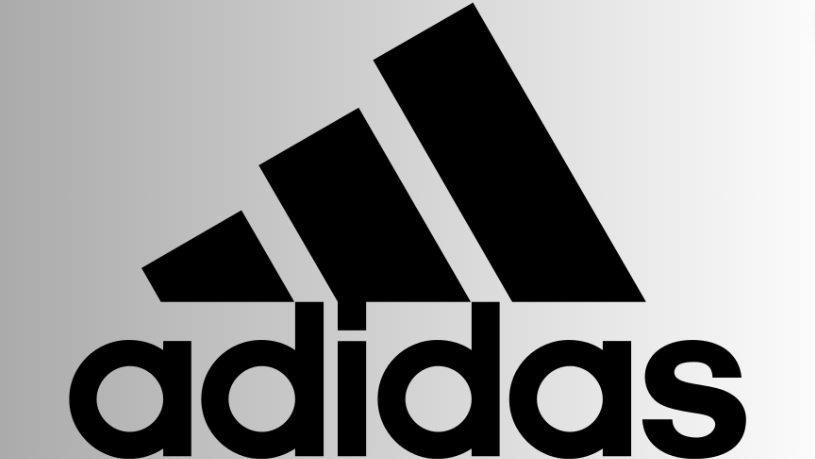
The Legacy and Innovation of Adidas: A Deep Dive into the Iconic Sportswear Giant
Adidas is more than just a brand; it’s a symbol of athleticism, innovation, and style. Founded in 1949, Adidas has grown to become one of the largest sportswear companies in the world, rivaled only by Nike. With its headquarters in Herzogenaurach, Germany, Adidas is celebrated for its signature “Three Stripes” logo and a legacy of pioneering sports apparel and footwear.
The Origins of Adidas
The Birth of a Giant
Adidas was founded by Adolf “Adi” Dassler in 1949 after a split with his brother, who went on to create Puma. The company was built on a foundation of innovation and quality, aiming to provide athletes with the best possible equipment to enhance their performance. The name “Adidas” is derived from Adi’s first and last names, a simple yet effective branding choice.
Early Innovations and Milestones
In its early years, Adidas quickly gained a reputation for producing high-quality athletic shoes. One of the first major breakthroughs came in 1954 when the German football team won the World Cup wearing Adidas boots equipped with screw-in studs. This victory cemented Adidas’s reputation as a leader in sports innovation.
The Iconic Three Stripes

Symbol of Quality and Performance
The Three Stripes logo, originally added to stabilize the midfoot, has become synonymous with Adidas. Over the years, it has evolved into a powerful branding tool, instantly recognizable worldwide. This simple yet striking design symbolizes the brand’s commitment to quality, performance, and style.
Evolution of the Logo
While the Three Stripes remain a constant, the Adidas logo has undergone several changes. The Trefoil logo, introduced in 1972, represents the diversity of the Adidas brand, while the current Performance logo, a mountain-like shape, signifies the challenge of overcoming obstacles.
Adidas and Sports
Collaborations with Top Athletes
Adidas has a long history of partnering with elite athletes to develop and promote its products. These collaborations not only enhance the brand’s credibility but also provide valuable insights into the needs of professional athletes.
- Soccer Legends: Icons like Lionel Messi and David Beckham have been long-time ambassadors for Adidas, helping to elevate the brand in the world of soccer.
- Basketball Stars: In the realm of basketball, players like James Harden and Damian Lillard have their own signature lines, showcasing Adidas’s commitment to the sport.
Innovation in Athletic Footwear
Adidas is renowned for its cutting-edge technology in athletic footwear. Some of the most notable innovations include:
- Boost Technology: Introduced in 2013, Boost foam provides unparalleled energy return and comfort, revolutionizing running and training shoes.
- Primeknit: This advanced knitting technique offers a seamless and flexible upper, enhancing fit and performance.
Fashion and Lifestyle Influence
Collaborations with Designers and Celebrities
Beyond sports, Adidas has made significant inroads into fashion and lifestyle markets. Collaborations with high-profile designers and celebrities have broadened the brand’s appeal.
- Yeezy Line: The partnership with Kanye West has produced the highly successful Yeezy line, blending high fashion with athletic wear.
- Pharrell Williams: His Human Race line emphasizes inclusivity and creativity, further cementing Adidas’s position in the fashion world.
Streetwear and Cultural Impact
Adidas’s influence extends beyond the athletic arena into streetwear and popular culture. The brand’s apparel and footwear are staples in urban fashion, beloved by trendsetters and influencers.
Environmental and Social Responsibility
Commitment to Sustainability
Adidas is at the forefront of sustainable practices in the sportswear industry. The brand is committed to reducing its environmental impact through various initiatives.
- Parley for the Oceans: This partnership involves creating products from recycled ocean plastic, highlighting Adidas’s commitment to environmental preservation.
- Sustainable Materials: Adidas aims to use only recycled polyester in all its products by 2024, demonstrating its dedication to sustainability.
Social Initiatives
Adidas also focuses on social responsibility, promoting inclusivity and diversity within the company and in its marketing campaigns. Initiatives like the She Breaks Barriers program aim to empower women in sports.
The Future of Adidas
Embracing Digital Transformation
Adidas continues to innovate by embracing digital technologies. The brand is investing in areas like e-commerce, digital marketing, and personalized customer experiences to stay ahead in a rapidly changing market.
Expanding Product Lines
Adidas is constantly expanding and diversifying its product lines to meet the evolving needs of athletes and consumers. From high-performance gear to stylish athleisure, Adidas aims to provide products that blend functionality with fashion.
Conclusion
Adidas’s journey from a small German company to a global sportswear giant is a testament to its commitment to innovation, quality, and performance. With its iconic Three Stripes, groundbreaking collaborations, and dedication to sustainability, Adidas continues to set the standard in the industry. As the brand looks to the future, it remains poised to inspire and empower athletes and consumers worldwide.
Frequently Asked Questions (FAQs)
What makes Adidas’s Boost technology unique?
Boost technology, introduced in 2013, offers unparalleled energy return and comfort. The unique foam material provides a bouncy and responsive feel, making it ideal for running and training shoes.
How does Adidas contribute to environmental sustainability?
Adidas is committed to sustainability through initiatives like the Parley for the Oceans partnership, which involves creating products from recycled ocean plastic. The brand also aims to use only recycled polyester in all its products by 2024.
Who are some of the top athletes associated with Adidas?
Adidas has collaborated with numerous top athletes, including soccer legends Lionel Messi and David Beckham, as well as basketball stars James Harden and Damian Lillard. These partnerships enhance the brand’s credibility and provide valuable insights for product development.
What is the significance of the Three Stripes logo?
The Three Stripes logo, originally added to stabilize the midfoot, has become synonymous with Adidas. It represents the brand’s commitment to quality, performance, and style, making it one of the most recognizable logos in the world.
How has Adidas influenced fashion and lifestyle markets?
Adidas has made significant inroads into fashion and lifestyle markets through collaborations with designers and celebrities like Kanye West and Pharrell Williams. These partnerships have broadened the brand’s appeal and solidified its position in the fashion world.

Trending Sports News
Joe Montana: The Legacy of “Joe Cool”
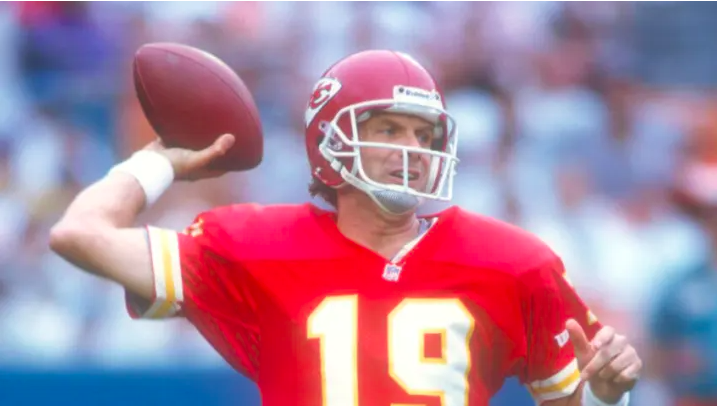
Joe Montana: The Legacy of “Joe Cool”
Joe Montana, known as “Joe Cool,” is one of the most legendary quarterbacks in NFL history. With four Super Bowl victories and three Super Bowl MVPs, Montana’s precision passing and calm demeanor under pressure made him a standout player in the 1980s. This article delves into the remarkable career of Joe Montana, exploring his early years, his time with the San Francisco 49ers, and his lasting impact on the sport.
Early Life and College Career
Childhood and High School Years
Joe Montana was born on June 11, 1956, in New Eagle, Pennsylvania. From a young age, he showed an affinity for sports, excelling in basketball and football during his high school years at Ringgold High School. Montana’s natural talent and competitive spirit were evident early on, setting the stage for his future success.
Notre Dame and College Achievements
Montana attended the University of Notre Dame, where he quickly made a name for himself as a skilled quarterback. Despite initial setbacks due to injuries, Montana’s resilience and skill led Notre Dame to several memorable victories. His most notable achievement in college was leading the Fighting Irish to a comeback victory in the 1979 Cotton Bowl, cementing his reputation as a clutch performer.
The San Francisco 49ers Era
Draft and Early Years
In 1979, Joe Montana was drafted by the San Francisco 49ers in the third round. Although he wasn’t an immediate starter, Montana’s potential was clear. By 1981, he had secured the starting quarterback position, beginning one of the most illustrious careers in NFL history.
Super Bowl Success
First Super Bowl Victory (1982)
Montana’s first Super Bowl victory came in the 1981 season, culminating in a win against the Cincinnati Bengals in Super Bowl XVI. His performance earned him his first Super Bowl MVP award, showcasing his ability to perform under pressure.
Dynasty Years (1984-1989)
The 1984 season marked the beginning of the 49ers’ dominance in the NFL. Montana led the team to a 15-1 record and a decisive victory over the Miami Dolphins in Super Bowl XIX. Over the next few years, Montana would add two more Super Bowl titles to his resume, defeating the Cincinnati Bengals again in Super Bowl XXIII and the Denver Broncos in Super Bowl XXIV. His calm and collected demeanor earned him the nickname “Joe Cool.”
The Art of Precision Passing
Montana’s Playing Style
Joe Montana was renowned for his precision passing and quick decision-making. His ability to read defenses and deliver accurate throws made him a formidable opponent. Montana’s style wasn’t about raw power but about finesse, timing, and intelligence.
Iconic Moments
The Catch
One of Montana’s most iconic moments came in the 1981 NFC Championship Game against the Dallas Cowboys. With the 49ers trailing late in the game, Montana orchestrated a drive that ended with a touchdown pass to Dwight Clark, known as “The Catch.” This moment is etched in NFL history and exemplifies Montana’s ability to perform in clutch situations.
Super Bowl XXIII Drive
In Super Bowl XXIII, with the 49ers trailing the Bengals, Montana led a 92-yard drive that culminated in a game-winning touchdown pass to John Taylor. This drive is often cited as one of the greatest in NFL history and further solidified Montana’s reputation as a clutch performer.
Challenges and Triumphs
Injuries and Comebacks
Montana’s career wasn’t without its challenges. He faced several significant injuries, including back and elbow issues that threatened his playing days. However, Montana’s determination and resilience allowed him to return to the field and continue performing at a high level.
Transition to the Kansas City Chiefs
In 1993, Montana was traded to the Kansas City Chiefs, where he played for two seasons before retiring. Despite being in the latter stages of his career, Montana led the Chiefs to the playoffs and an AFC Championship Game appearance, proving he still had the ability to compete at the highest level.
Joe Montana’s Impact on the NFL
Influence on Future Quarterbacks
Joe Montana’s style of play and approach to the game have influenced countless quarterbacks. His emphasis on precision, preparation, and composure under pressure set a new standard for the position. Players like Tom Brady and Peyton Manning have often cited Montana as a source of inspiration.
Legacy and Recognition
Montana’s contributions to the sport have been widely recognized. He was inducted into the Pro Football Hall of Fame in 2000, and his career achievements continue to be celebrated by fans and analysts alike. Montana’s legacy is not just about his Super Bowl victories but also his impact on the game of football.
Life After Football
Broadcasting and Business Ventures
After retiring from football, Montana pursued a career in broadcasting, providing analysis and commentary for NFL games. He also ventured into business, investing in various startups and becoming a successful entrepreneur.
Philanthropy
Montana has also been active in philanthropy, supporting numerous charitable causes and organizations. His efforts off the field reflect his commitment to making a positive impact in the community.
Joe Montana’s Personal Life
Family and Relationships
Joe Montana married Jennifer Wallace in 1985, and the couple has four children. Despite his fame and success, Montana has always emphasized the importance of family and maintaining a balanced life.
Hobbies and Interests
In his free time, Montana enjoys various hobbies, including golf and horse racing. His competitive spirit remains evident in all his pursuits, whether on the golf course or in business.
Conclusion
Joe Montana’s career is a testament to his skill, determination, and resilience. Known as “Joe Cool” for his calm demeanor under pressure, Montana’s legacy in the NFL is unmatched. With four Super Bowl victories, three Super Bowl MVPs, and countless memorable moments, Montana’s impact on the sport is profound. His influence extends beyond the field, inspiring future generations of quarterbacks and leaving an indelible mark on the game of football.
Frequently Asked Questions (FAQs)
What made Joe Montana such a successful quarterback?
Joe Montana’s success can be attributed to his precision passing, quick decision-making, and calm demeanor under pressure. His ability to read defenses and execute plays with accuracy made him one of the greatest quarterbacks in NFL history.
How many Super Bowls did Joe Montana win?
Joe Montana won four Super Bowl titles during his career with the San Francisco 49ers. He was also named Super Bowl MVP three times.
What is “The Catch”?
“The Catch” refers to a famous play in the 1981 NFC Championship Game where Joe Montana threw a game-winning touchdown pass to Dwight Clark. This moment is one of the most iconic in NFL history.
Did Joe Montana face any significant injuries during his career?
Yes, Joe Montana faced several significant injuries, including back and elbow issues. Despite these challenges, he made successful comebacks and continued to perform at a high level.
What is Joe Montana doing now?
After retiring from football, Joe Montana pursued a career in broadcasting and ventured into business. He is also active in philanthropy, supporting various charitable causes.
Trending Sports News
The Enduring Legacy of Asics in the Sportswear Industry

The Enduring Legacy of Asics in the Sportswear Industry
Asics is a globally respected brand known for its high-quality running shoes and sports apparel. Headquartered in Kobe, Japan, Asics was founded in 1949 and has since become a favorite among serious runners and athletes.
The brand’s commitment to performance and comfort has made it a leading name in the sportswear industry. This article delves into the history, innovations, and impact of Asics, highlighting why it continues to be a top choice for athletes around the world.
The History of Asics
The Early Years
Asics, an acronym for “Anima Sana In Corpore Sano” (a sound mind in a sound body), was founded by Kihachiro Onitsuka in 1949. The company initially produced basketball shoes, but quickly expanded its product line to include footwear for other sports.
Expansion and Global Reach
By the 1970s, Asics had begun to establish a presence in international markets. The brand’s innovative designs and focus on performance helped it gain a foothold in the competitive sportswear industry. Today, Asics is a globally recognized brand, known for its dedication to quality and performance.
Asics’ Product Innovations
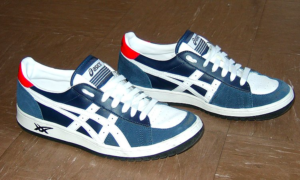
Running Shoes
Asics is renowned for its running shoes, which are celebrated for their superior performance and comfort. Some of the brand’s most notable innovations include:
- Gel Technology: Introduced in the mid-1980s, Asics’ Gel technology provides enhanced cushioning and shock absorption, making it a staple in their running shoes.
- FlyteFoam: A lightweight midsole material that offers excellent cushioning and durability, enhancing the running experience for athletes.
- Guidance Line: A vertical flex groove in the midsole that improves gait efficiency, helping runners achieve a smoother stride.
Sports Apparel
In addition to footwear, Asics offers a wide range of sports apparel designed to enhance performance and comfort. Key features of Asics apparel include:
- Moisture-Wicking Fabrics: These materials help keep athletes dry and comfortable by drawing sweat away from the skin.
- MotionDry Technology: A fabric technology that reduces skin irritation and enhances comfort during intense physical activities.
- Compression Gear: Designed to improve circulation and support muscles, Asics’ compression gear is popular among athletes for its performance benefits.
Collaborations and Special Editions
Asics frequently collaborates with designers, athletes, and brands to create unique and limited-edition products. Some notable collaborations include:
- Kiko Kostadinov: A partnership that blends high fashion with performance, resulting in stylish yet functional footwear.
- Vivienne Westwood: A collaboration that brings a punk rock aesthetic to Asics’ classic silhouettes.
- ASICS x Harmony: A collection that combines minimalist design with advanced performance features.
Asics’ Commitment to Performance and Comfort
Research and Development
Asics places a strong emphasis on research and development, investing heavily in creating innovative products that enhance athletic performance. The Asics Institute of Sport Science in Kobe is a testament to the brand’s dedication to advancing sports technology.
Biomechanics and Gait Analysis
Asics uses advanced biomechanics and gait analysis to design footwear that optimizes performance and reduces the risk of injury. By understanding how the body moves, Asics creates products that support natural motion and enhance comfort.
Endorsements and Sponsorships
Asics partners with top athletes and sports teams to promote its products and gain valuable insights into their performance needs. These endorsements and sponsorships help Asics maintain its reputation as a leader in the sportswear industry.
Asics’ Influence in the Running Community
Marathons and Running Events
Asics is a prominent sponsor of marathons and running events worldwide. The brand’s involvement in these events helps promote its products and connect with the running community. Some notable events sponsored by Asics include:
- New York City Marathon: Asics is the official footwear and apparel sponsor of this prestigious event.
- Tokyo Marathon: Asics’ sponsorship of the Tokyo Marathon reflects its strong ties to its home country and the global running community.
- Paris Marathon: Asics’ partnership with the Paris Marathon highlights its commitment to supporting runners around the world.
Running Clubs and Training Programs
Asics supports running clubs and training programs to encourage people to stay active and achieve their fitness goals. These initiatives include:
- ASICS Running Clubs: Community-based clubs that offer training sessions, group runs, and social events for runners of all levels.
- ASICS FrontRunner: A global team of passionate runners who inspire and motivate others to embrace the joy of running.
Online Resources and Training Tools
Asics provides a wealth of online resources and training tools to help runners improve their performance. These include:
- ASICS Runkeeper: A popular mobile app that tracks running routes, distances, and times, offering personalized training plans and insights.
- ASICS Studio: An app that offers audio-guided workouts led by professional trainers, covering various fitness disciplines.
Asics’ Commitment to Sustainability
Eco-Friendly Practices
Asics is dedicated to sustainability and has implemented various initiatives to reduce its environmental impact. These efforts include:
- Sustainable Materials: Asics uses eco-friendly materials in its products, such as recycled polyester and organic cotton.
- Energy Efficiency: The company has invested in energy-efficient manufacturing processes and facilities to reduce its carbon footprint.
- Waste Reduction: Asics is committed to minimizing waste through recycling programs and responsible production practices.
Corporate Social Responsibility
Asics’ commitment to corporate social responsibility extends beyond environmental sustainability. The company supports various initiatives that promote health, fitness, and well-being, including:
- Right to Play: A global organization that uses the power of play to educate and empower children facing adversity.
- Asics Foundation: The foundation supports programs that encourage physical activity and healthy lifestyles in communities worldwide.
The Future of Asics
Innovation and Expansion
Asics continues to innovate, focusing on creating products that meet the evolving needs of athletes. The brand’s emphasis on technology, sustainability, and design ensures that it remains a leader in the sportswear industry.
Embracing Digital Transformation
Asics is leveraging digital technology to enhance its products and customer experience. Investments in e-commerce, digital marketing, and personalized customer interactions are key components of this strategy, helping Asics reach a broader audience and stay competitive in the market.
Conclusion
Asics’ journey from a small company in Kobe, Japan, to a global sportswear brand is a testament to its commitment to innovation, performance, and comfort. With a rich history, iconic products, and strategic partnerships, Asics has solidified its position as a leader in the running and sportswear markets. As the brand continues to evolve and embrace new challenges, it remains poised to inspire and empower athletes around the world.
Frequently Asked Questions (FAQs)
What makes Asics’ Gel technology unique?
Asics’ Gel technology provides enhanced cushioning and shock absorption, making it a staple in their running shoes. This innovation helps reduce the impact on joints and enhances comfort during runs.
How does Asics support the running community?
Asics supports the running community through sponsorships of marathons and running events, running clubs, training programs, and online resources like the ASICS Runkeeper app.
What are some of Asics’ sustainable initiatives?
Asics is dedicated to sustainability and uses eco-friendly materials, energy-efficient manufacturing processes, and waste reduction programs. The company also supports various social responsibility initiatives.
How does Asics ensure the performance of its products?
Asics invests heavily in research and development, using biomechanics and gait analysis to design footwear that optimizes performance and reduces the risk of injury. The Asics Institute of Sport Science plays a key role in this process.
What are some notable collaborations by Asics?
Asics has collaborated with designers, athletes, and brands to create unique and limited-edition products. Notable collaborations include partnerships with Kiko Kostadinov, Vivienne Westwood, and the ASICS x Harmony collection.
For more information, visit the Asics official website.
Trending Sports News
The Evolution and Impact of Reebok in the Sportswear Industry
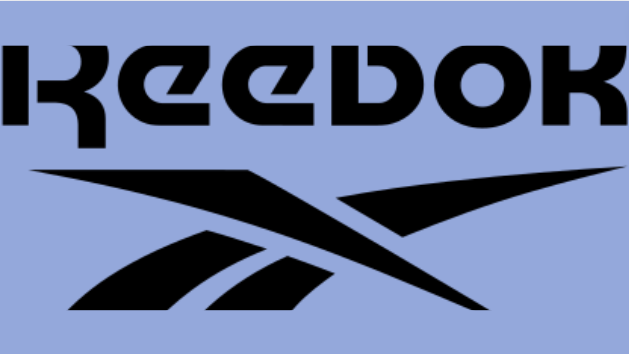
The Evolution and Impact of Reebok in the Sportswear Industry
Reebok is a globally recognized brand known for its athletic footwear, apparel, and accessories. Headquartered in Boston, Massachusetts, USA, Reebok has a rich history dating back to 1895 when it was founded as J.W. Foster and Sons. In 1958, it was rebranded as Reebok and has since grown into a powerhouse in the sportswear industry.
As a subsidiary of Adidas, Reebok has carved out a niche for itself, especially in the fitness and training markets. This article explores Reebok’s journey, its innovative products, and its influence in the world of sports and fitness.
The History of Reebok
Early Beginnings: J.W. Foster and Sons
Reebok’s origins can be traced back to 1895 in Bolton, England, where Joseph William Foster started J.W. Foster and Sons. The company initially made spiked running shoes, which gained popularity among athletes for their performance-enhancing design. These early innovations laid the foundation for Reebok’s future success.
Rebranding to Reebok
In 1958, two of Foster’s grandsons, Joe and Jeff Foster, founded Reebok, named after an African antelope called the rhebok. The rebranding marked the beginning of a new era for the company, as it began to expand its product line and reach a broader audience.
Reebok’s Rise to Prominence
Breaking into the American Market
Reebok’s entry into the American market in the late 1970s and early 1980s was a game-changer. The company introduced its athletic shoes to the U.S. market, quickly gaining popularity due to their innovative design and performance.
The brand’s breakthrough came with the introduction of the Reebok Freestyle, the first athletic shoe designed specifically for women, which became a cultural icon.
Partnership with Adidas
In 2005, Reebok became a subsidiary of Adidas, one of the world’s leading sportswear companies. This partnership allowed Reebok to leverage Adidas’ resources and global reach while maintaining its unique identity and focus on fitness and training markets.
Reebok’s Product Innovations
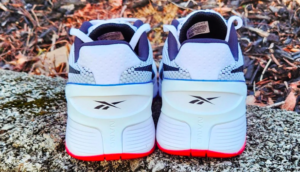
Athletic Footwear
Reebok has a reputation for creating high-quality, innovative athletic footwear. Some of the brand’s most notable products include:
- Reebok Freestyle: The first athletic shoe designed specifically for women, which became a symbol of the 1980s fitness craze.
- Pump Technology: Introduced in the late 1980s, Reebok’s Pump technology allowed wearers to customize the fit of their shoes by inflating a bladder in the tongue.
- Nano Series: Designed for CrossFit athletes, the Nano series is known for its durability, stability, and versatility.
Apparel and Accessories
Reebok offers a wide range of athletic apparel and accessories, including:
- Workout Gear: High-performance clothing designed for various fitness activities, such as running, training, and yoga.
- CrossFit Apparel: Specialized clothing and gear for CrossFit athletes, developed in collaboration with the CrossFit community.
- UFC Gear: Official apparel and accessories for UFC athletes and fans, reflecting Reebok’s strong presence in the combat sports market.
Collaborations and Special Editions
Reebok has collaborated with various designers, celebrities, and brands to create unique and limited-edition products. Some notable collaborations include:
- Victoria Beckham: A fashion-forward collection blending Reebok’s performance technology with Beckham’s stylish designs.
- Maison Margiela: A collaboration that combines Reebok’s classic silhouettes with Maison Margiela’s avant-garde design aesthetics.
- Kendrick Lamar: A partnership with the Grammy-winning rapper to create socially conscious and stylish footwear.
Reebok’s Influence in Fitness and Training
CrossFit Partnership
Reebok’s partnership with CrossFit, which began in 2010, has been a significant factor in the brand’s resurgence. As the official outfitter of CrossFit, Reebok provides apparel, footwear, and accessories for CrossFit athletes and events. This partnership has solidified Reebok’s position as a leader in the fitness and training markets.
UFC Collaboration
In 2014, Reebok became the official outfitter of the UFC, providing athletes with fight kits, training gear, and fan apparel. This collaboration has expanded Reebok’s reach in the combat sports market and strengthened its association with high-performance athletic gear.
ReebokONE and Fitness Communities
ReebokONE is an online platform designed to connect fitness professionals and enthusiasts. The platform offers resources, training programs, and networking opportunities, reinforcing Reebok’s commitment to supporting the fitness community.
Reebok’s Commitment to Sustainability
Sustainable Practices and Materials
Reebok is dedicated to sustainability and has implemented various initiatives to reduce its environmental impact. Some of these efforts include:
- Cotton + Corn Collection: A line of footwear made from sustainable materials such as cotton and corn, designed to be biodegradable.
- [Ree]Cycled Collection: Products made from at least 30% recycled materials, reflecting Reebok’s commitment to reducing waste.
- Plant-Based Footwear: Shoes made from natural materials like eucalyptus and algae, part of Reebok’s effort to create more eco-friendly products.
Social Responsibility
Reebok is also committed to social responsibility, supporting various initiatives and organizations that promote health, fitness, and well-being. The brand’s efforts include:
- BOKS (Build Our Kids’ Success): A physical activity program for children, aiming to improve their health and academic performance.
- Reebok Foundation: Supporting programs that promote physical activity and healthy lifestyles for underserved communities.
The Future of Reebok
Innovation and Expansion
Reebok continues to innovate, focusing on creating products that meet the evolving needs of athletes and fitness enthusiasts. The brand’s emphasis on technology, sustainability, and design ensures that it remains a leader in the sportswear industry.
Embracing Digital Transformation
Reebok is leveraging digital technology to enhance its products and customer experience. Investments in e-commerce, digital marketing, and personalized customer interactions are key components of this strategy, helping Reebok reach a broader audience and stay competitive in the market.
Conclusion
Reebok’s journey from a small shoe company in Bolton, England, to a global sportswear brand is a testament to its commitment to innovation, performance, and style. With a rich history, iconic products, and strategic partnerships, Reebok has solidified its position in the fitness and training markets.
As the brand continues to evolve and embrace new challenges, it remains poised to inspire and empower athletes and fitness enthusiasts around the world.
Frequently Asked Questions (FAQs)
What makes Reebok’s Pump technology unique?
Reebok’s Pump technology allows wearers to customize the fit of their shoes by inflating a bladder in the tongue. This innovation provides a personalized fit and enhances comfort and performance.
How has Reebok’s partnership with CrossFit impacted the brand?
Reebok’s partnership with CrossFit has solidified its position as a leader in the fitness market. By providing apparel, footwear, and accessories for CrossFit athletes and events, Reebok has strengthened its association with high-performance athletic gear.
What are some of Reebok’s sustainable initiatives?
Reebok has implemented various sustainable initiatives, including the Cotton + Corn Collection, the [Ree]Cycled Collection, and plant-based footwear. These efforts reflect the brand’s commitment to reducing its environmental impact.
How does Reebok support the fitness community?
Reebok supports the fitness community through initiatives like ReebokONE, an online platform for fitness professionals, and the BOKS program, which promotes physical activity and healthy lifestyles for children.
What are some notable collaborations by Reebok?
Reebok has collaborated with designers, celebrities, and brands to create unique products. Notable collaborations include partnerships with Victoria Beckham, Maison Margiela, and Kendrick Lamar, blending performance technology with stylish design.
For more information, visit the Reebok official website.
-

 NBA5 months ago
NBA5 months agoLaMelo Ball Net Worth: A Comprehensive Look at the NBA Star’s Financial Empire
-

 Football6 months ago
Football6 months agoEuro 2024: Alvaro Morata Speaks Out About ‘No Respect’ in Spain
-

 Football7 months ago
Football7 months agoMeet the World Football Celebrities and Their Stories
-

 Game6 months ago
Game6 months agoThe Ultimate Guide to General Multi-Sport Events
-
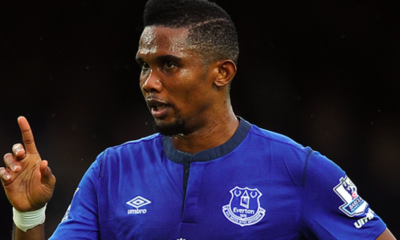
 Football7 months ago
Football7 months agoSamuel Eto’o: Legendary Cameroonian Soccer Star’s Career
-

 Football6 months ago
Football6 months agoRonaldo’s Business Ventures and Investments (CR7 Brand)
-

 Wrestling3 months ago
Wrestling3 months agoJey Uso Biography and Net Worth: The Rise of a WWE Superstar
-

 Wrestling4 months ago
Wrestling4 months agoKevin Owens: The Prizefighter’s Rise to Fame and Fortune



